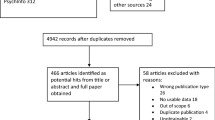Abstract
Background: The 19-item Acne-QoL is a validated psychometric instrument designed for use in clinical trials. Objective: The purpose of this study was to develop a condensed version of the Acne-QoL as an alternative measure of psychosocial impact for use in routine clinical practice. Methods: Four condensed versions of the Acne-QoL were evaluated by regression analysis in a subset of 434 patients. The version with four items most broadly representative of acne-specific quality of life combined with a high level of correlation to Acne-QoL total score was selected for further validation in two different patient samples. Results: The patient ranked condensation, representing items from each domain of greatest patient-perceived importance and relevance was selected for further analysis (Acne-Q4). The Acne-Q4 explained 98.5% of the variation in total score of Acne-QoL. Validation of the Acne-Q4 in a follow-up group and an independent subset of patients resulted in Pearson correlation coefficients of 0.967 (p<0.001). Construct validity of the Acne-Q4 was confirmed by demonstrating a similar relationship as the Acne-QoL to acne severity. Limitations: There is less breadth and detail of QoL information in the Acne-Q4 than in the Acne-QoL. The analysis relied on a total score for Acne-QoL, which the original developers did not validate. Conclusions: The Acne-Q4 is accurately reflective of the parent instrument and may facilitate the psychometric evaluation of the impact of facial acne on patients in routine clinical practice by its practicality.
Similar content being viewed by others
Abbreviations
- Acne-QoL19 :
-
19-item Acne-Quality of Life
- Acne-Q4 :
-
4-item index of Acne-Quality of Life
- IGA:
-
Investigators Global Assessment
References
Layton AM, Seukeran D and Cunliffe WJ (1997). Scarred for life?. Dermatology 195(supp 1): 15–21
Motley RJ and Findlay AY (1989). How much disability is caused by acne?. Clin Exp Dermatol 14: 194–198
Motley RJ and Finlay AY (1992). Practical use of a disability index in the routine management of acne. Clin Exp Dermatol 17: 1–3
Gupta M, Johnson AM and Gupta AK (1998). The development of an acne quality of life scale: Reliability, validity, and relation to subjective acne severity in mild to moderate acne vulgaris. Acta Derm Venereol 78: 451–456
Girman CJ, Hartmaier S and Thiboutot D (1996). Evaluating health-related quality of life in patients with facial acne: development of a self-administered questionnaire for clinical trials. Qual Life Res 5: 481–490
Martin AR, Lookingbill DP, Botek A, Light J, Thiboutot D and Girman CJ (2001). Health-related quality of life among patients with facial acne – assessment of a new acne-specific questionnaire. Clin Exp Dermatol 26: 380–385
Fehnel SE, McLeod LD and Brandman J (2002). Responsiveness of the acne-specific quality of life questionnaire (Acne-QoL) to treatment for acne vulgaris in placebo-controlled clinical trials. Qual Life Res 11: 809–816
Executive summary, Dermatologic and Ophthalmic Drugs Advisory Committee, Nov 4–5, 2002
(1999). The psychological and emotional impact of acne and the effect of treatment with isotretinoin. Br J Dermatol 140(2): 273–282
(1988). Depression and suicidal ideation in dermatology patients with acne, alopecia areata, atopic dermatitis and psoriasis. Br J Dermatol 139(5): 846–850
(1991). The psychosocial effects of acne on adolescents. Pediatr Dermatol 8(4): 332–338
(1985). The psychological impact of severe acne. Cutis 36(1): 84–86
Salek MS, Khan GK and Finlay AY (1996). Questionnaire techniques in assessing acne handicap: Reliability and validity study. Qual Life Res 5: 131–138
Finlay AY (1998). Quality of life assessments in dermatology. Semin Cutan Med Surg 17: 291–296
Gill TM and Feinstein AR (1994). A critical appraisal of the quality of quality-of-life measurements. JAMA 272: 619–626
Bjorner JB, Petersen MA and Groenvold M (2004). Use of item response theory to develop a shortened version of the EORTC QLQ-C30 emotional functioning scale. Qual Life Res 13: 1683–1697
Nanda U, McLendon PM, Andresen EM and Armbrecht E (2003). The SIP68: An condensed sickness impact profile for disability outcomes research. Qual Life Res 12: 583–595
Jacobs JE, Maille AR, Akkermans RP and Grol RPTM (2004). Assessing the quality of life of adults with chronic respiratory diseases in routine primary care: Construction and first validation of the 10-item respiratory illness questionnaire-monitoring 10 (RIQ-MON10). Qual Life Res 13: 1117–1127
Sapin C, Antoniotti S, Simeoni MC, Clement A, El Khammar M and Auquier P (2004). Shortening the VSP-A: Preliminary development of the VSP-A12, a 12-item short-form. Qual Life Res 13: 235–241
Ritsner M, Kurs R, Ratner Y and Gibel A (2005). Validation of the five-item condensed quality of life scale for schizophrenia. PRO Newslett 34: 14–15
Author information
Authors and Affiliations
Corresponding author
Rights and permissions
About this article
Cite this article
Tan, J., Fung, K.Y. & Khan, S. Condensation and validation of a 4-item index of the Acne-QoL. Qual Life Res 15, 1203–1210 (2006). https://doi.org/10.1007/s11136-006-0063-3
Accepted:
Published:
Issue Date:
DOI: https://doi.org/10.1007/s11136-006-0063-3




